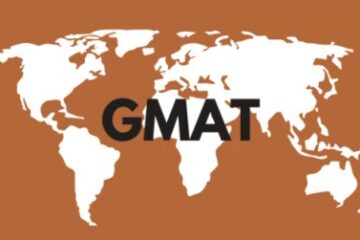A Project Charter: What Is It and Why Is It Important

Introduction
In the dynamic landscape of project management, a Project Charter stands as a cornerstone. This document serves as a compass, guiding project teams with a clear sense of direction and purpose. Let’s delve into the essence of a Project Charter, understanding what it entails and why it holds paramount importance in the realm of successful project execution.
At its core, a Project Charter is a formal, written document that outlines the project’s objectives, scope, stakeholders, and overall strategy. It serves as the North Star for project teams, aligning everyone with a shared vision and objectives. Think of it as the project’s constitution, setting the rules of engagement and establishing a foundation for success.
Key Elements of a Project Charter:
- Project Objectives:
Clearly stating the project’s objectives is the first building block of a Project Charter. This section articulates what the project aims to achieve, providing a focal point for the entire team.
- Project Scope:
Defining the boundaries of the project is crucial. The scope section outlines what is included and, equally important, what is excluded from the project. It establishes a framework for decision-making throughout the project lifecycle.
- Stakeholder Identification:
A comprehensive list of stakeholders and their roles is a vital component. Knowing who has a vested interest in the project ensures effective communication and collaboration.
- Project Timeline:
A high-level timeline helps in setting expectations regarding project duration. While detailed project schedules come later in the planning phase, a Project Charter provides a snapshot of the project’s temporal landscape.
- Budget Allocation:
Financial considerations are integral. The Project Charter should give an overview of the budget, providing a financial roadmap for the project team to navigate.
Importance of a Project Charter:
- Establishing Clarity and Direction:
A Project Charter acts as a compass, providing a clear direction for the project team. It ensures that everyone is on the same page regarding project goals, objectives, and scope.
- Aligning Stakeholders:
By explicitly defining stakeholders and their interests, a Project Charter minimizes the risk of misalignment. It fosters a shared understanding among team members, sponsors, and other key players.
- Mitigating Scope Creep:
Clearly outlining the project scope in the Project Charter is an effective preventive measure against scope creep. This helps in managing expectations and minimizing changes that could derail the project.
- Enhancing Decision-Making:
With a documented set of project objectives and constraints, decision-making becomes more efficient. The Project Charter serves as a reference point, enabling quick and informed choices.
- Risk Management:
Identifying potential risks early on is vital. A Project Charter lays the groundwork for risk management by providing a platform to discuss and document potential challenges.
Creating a Project Charter:
- Collaboration is Key:
Developing a Project Charter is not a solo endeavor. It requires collaboration among key stakeholders, project managers, and team members. This collective input ensures a more comprehensive and accurate document.
- Clarity is Crucial:
The language in a Project Charter should be clear and concise. Ambiguity can lead to confusion down the line. A well-crafted Project Charter sets the stage for effective project communication.
- Keep it Dynamic:
While the Project Charter provides a foundational framework, it should not be static. It’s advisable to revisit and update the document as the project progresses, especially when there are significant changes or shifts in strategy.
FAQs about Project Charters:
Q1: Is a Project Charter only for large projects?
A: No, a Project Charter is beneficial for projects of all sizes. Even small projects can benefit from the clarity and structure that a Project Charter provides.
Q2: Can a Project Charter change during the project?
A: Yes, a Project Charter is not set in stone. Changes may be necessary due to unforeseen circumstances, and the document should be updated accordingly to reflect the evolving nature of the project.
Q3: Who should be involved in creating a Project Charter?
A: Key stakeholders, project managers, and relevant team members should be actively involved in the creation of a Project Charter. Their collective input ensures a more holistic and accurate representation of the project.
Q4: Is a Project Charter the same as a project plan?
A: No, they serve different purposes. A Project Charter outlines the project’s vision, objectives, and high-level details, while a project plan delves into the nitty-gritty details of tasks, timelines, and resources.
Conclusion:
In the intricate dance of project management, the Project Charter emerges as a guiding partner, steering projects towards success. It’s not just a document; it’s the embodiment of a project’s identity and purpose. Crafting a robust Project Charter is an investment that pays dividends throughout the project lifecycle, ensuring everyone moves in harmony towards a common goal.
These days, project charters are created using a variety of tools by project management experts, or PMP Certified project managers. Through PMP Training courses, holders of the PMP Certification become experts at creating project charters. To prepare the charter, a variety of templates are available. This way, organizations can reduce the time taken to carry out the activities in the planning phase. Project charters are therefore seen as essential to the project management process.
Leave a reply
You must be logged in to post a comment.










